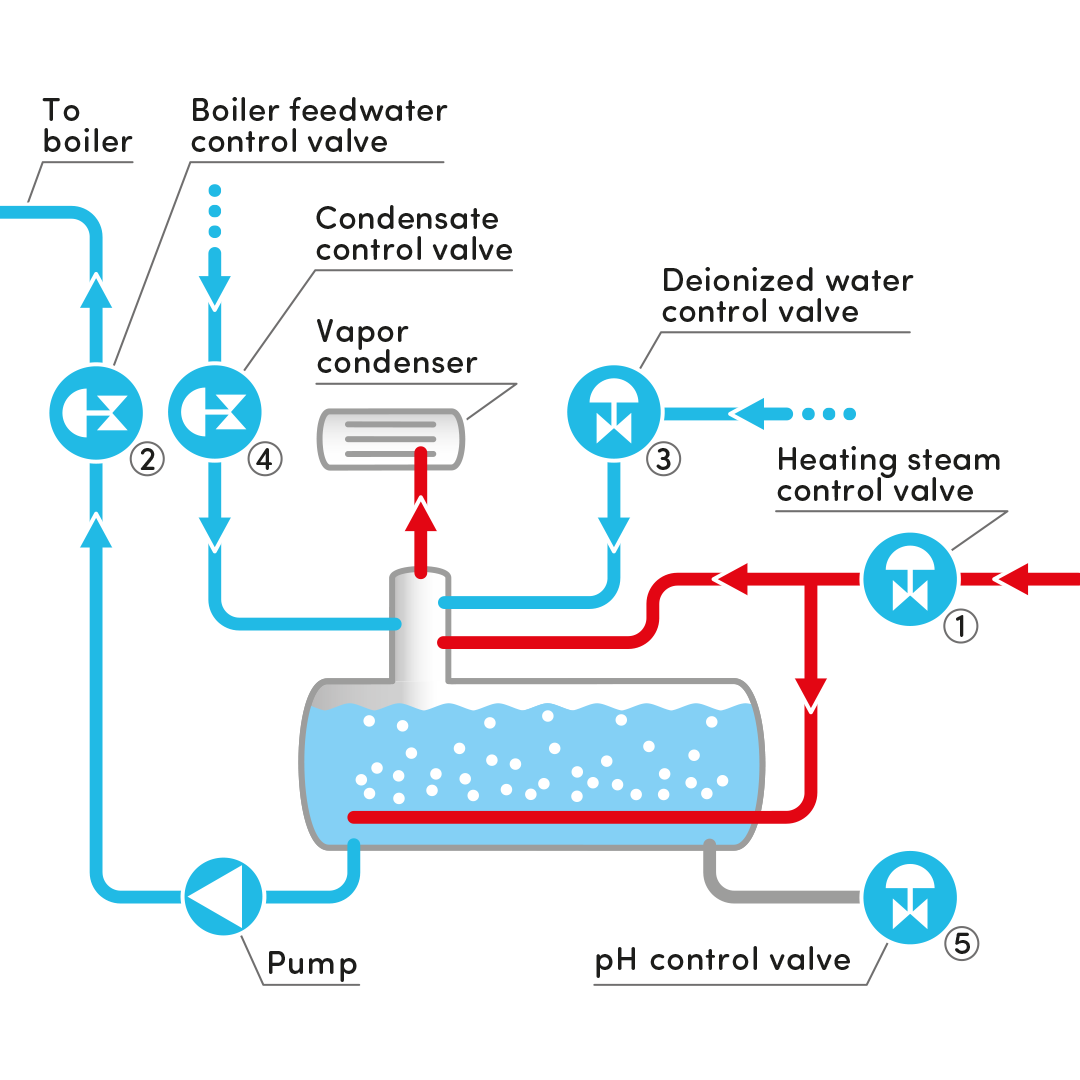
Feed water reservoir
You can find the suitable control valve for the feedwater tank in the power plant at ARCA.
1) Heating steam control valve
The feed water is degasified in the degasifier, which is located on the feed water reservoir. As a result, the harmful gases oxygen and carbon dioxide are largely removed. The degasification of the feed water is mainly carried out at overpressure (p = 0.1 – 0.4 bar) and the corresponding saturated steam temperature of 102 to 108 °C. The feed water reservoir is heated by a steam lance in the water chamber for mixing the fluid and by adding steam in the gas chamber. The steam is supplied by the heating steam control valve, which must be provided with built-in noise-reducing components. (series: 8C, 6N)
2) Feed water control valve
With this control valve, the level in the boiler drum is regulated so that boiler feed water is continuously available in the boiler for steam generation. In order to compensate for the difference between the characteristic curve of the feed water pump and the operating characteristic of the boiler system, the feed water control valve must be designed accordingly. (series: 8C, 6H, 350, 380)
3) Deionized water control valve
Losses are encountered in the water-steam circuit as a result of desalination, desludging, and sampling. These are compensated by adding deionized water from the water treatment plant. Impurities contained in the raw water in dissolved and undissolved form are removed in the water treatment plant. The deionized water is dosed to the feed water circuit by the deionized water control valve. (series: 8C, 6N)
4) Condensate control valve
The condensate that accumulates throughout the entire plant is fed back to the water-steam circuit using condensate control valves. Subsequent evaporation may occur as the condensate expands, depending on the pressure and temperature, and must be taken into account when selecting the reated Cv value and nominal outlet diameter. (series: 8C, 6N, 350)
5) pH control valve
The pH value of the deionized water is controlled by adding ammonia or caustic soda enriched water from the ion exchangers in the water treatment plant. Today, this task is assumed primarily by metering pumps but can also be carried out using pH control valves. (series: 8C)